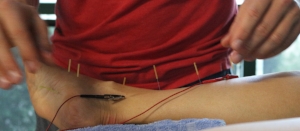Are you an active individual who is tired of dealing with foot & ankle pain and searching for treatment that provides lasting results?
At On Track Physio we help you overcome foot and ankle pains such as plantar fasciitis, Achilles tendinitis, and bunions WITHOUT unnecessary surgeries, injections, expensive orthotics that may or may not be helpful, or boring/mind numbing exercises.
Arch integrity and ankle mobility/dexterity can create problems for you in any activity. From walking a mile, to running a marathon or squatting at the gym.
If you currently are experiencing foot and ankle pain. Know this:
The arch is another muscle just like any other in the body. It was designed to be used! Have strength and stability. If you have “flat feet” stop blaming genetics and start learning how to use your foot!
High arch foot pain might be genetic related but that does not mean you can not improve the mobility of the arch. Having arch mobility and control with movement is just as important as having arch integrity and strength!
: Seek out a provider that understands the foot and can create a exercise program that is full body oriented but has specific detailed attention to HOW your feet play a role in full body movements.
If you would like our help at On Track Physio. Schedule a Free Discovery Session to learn more about how our specific approach can help you achieve sustainable results!
We look forward to speaking with you soon :)















